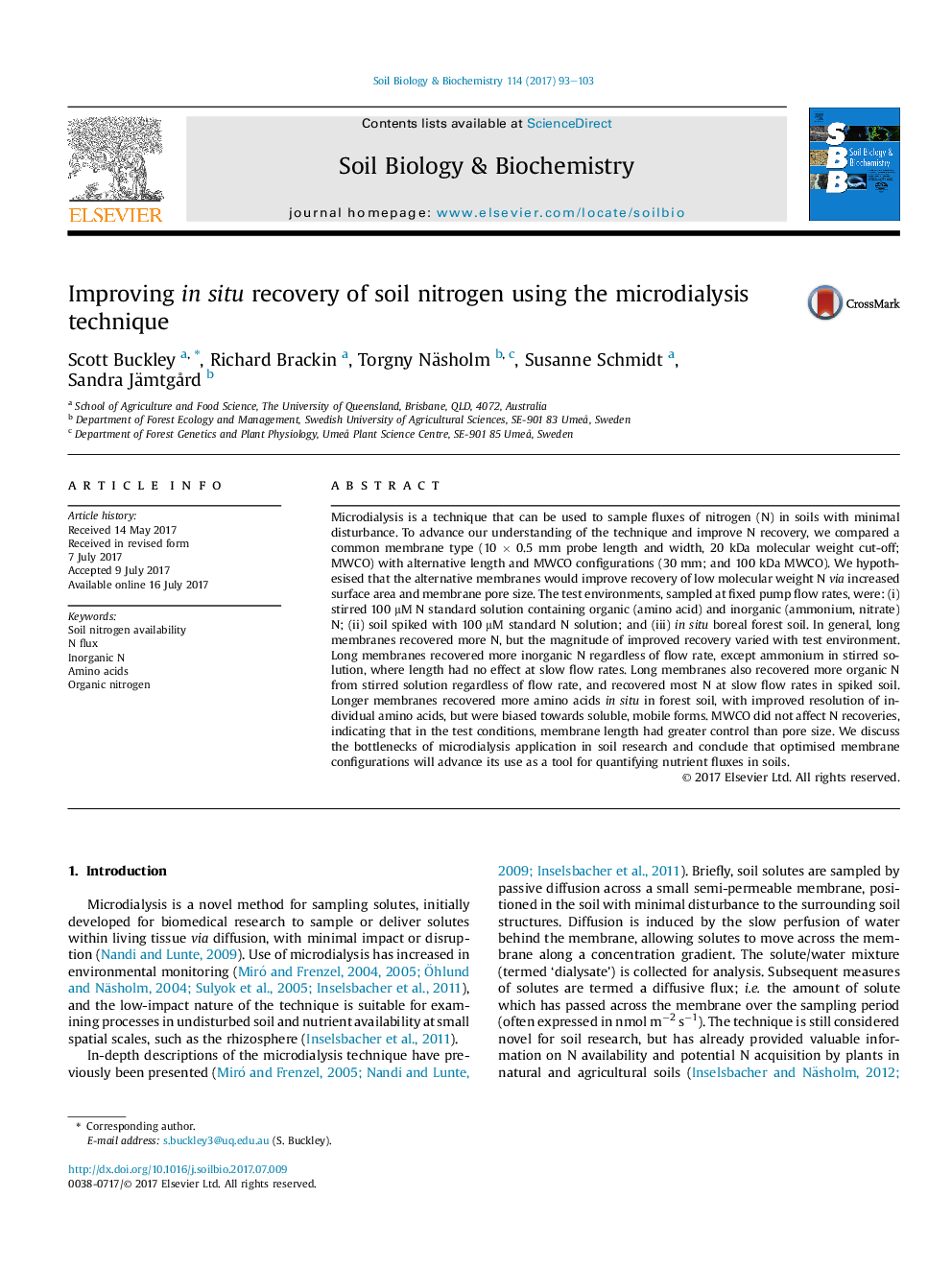| Article ID | Journal | Published Year | Pages | File Type |
|---|---|---|---|---|
| 5516310 | Soil Biology and Biochemistry | 2017 | 11 Pages |
â¢Longer microdialysis membranes increased recovery of organic and inorganic N in laboratory and forest soil.â¢Increased recovery biases N sampling towards soluble, mobile N forms.â¢Solute diffusion models explained different N fluxes in laboratory and field environments.â¢Larger membrane pore size had minimal effect on recovery of tested N forms.â¢Improved in situ recovery advances microdialysis as tool to quantify nutrient fluxes in soils.
Microdialysis is a technique that can be used to sample fluxes of nitrogen (N) in soils with minimal disturbance. To advance our understanding of the technique and improve N recovery, we compared a common membrane type (10 Ã 0.5 mm probe length and width, 20 kDa molecular weight cut-off; MWCO) with alternative length and MWCO configurations (30 mm; and 100 kDa MWCO). We hypothesised that the alternative membranes would improve recovery of low molecular weight N via increased surface area and membrane pore size. The test environments, sampled at fixed pump flow rates, were: (i) stirred 100 μM N standard solution containing organic (amino acid) and inorganic (ammonium, nitrate) N; (ii) soil spiked with 100 μM standard N solution; and (iii) in situ boreal forest soil. In general, long membranes recovered more N, but the magnitude of improved recovery varied with test environment. Long membranes recovered more inorganic N regardless of flow rate, except ammonium in stirred solution, where length had no effect at slow flow rates. Long membranes also recovered more organic N from stirred solution regardless of flow rate, and recovered most N at slow flow rates in spiked soil. Longer membranes recovered more amino acids in situ in forest soil, with improved resolution of individual amino acids, but were biased towards soluble, mobile forms. MWCO did not affect N recoveries, indicating that in the test conditions, membrane length had greater control than pore size. We discuss the bottlenecks of microdialysis application in soil research and conclude that optimised membrane configurations will advance its use as a tool for quantifying nutrient fluxes in soils.
Graphical abstractDownload high-res image (310KB)Download full-size image
